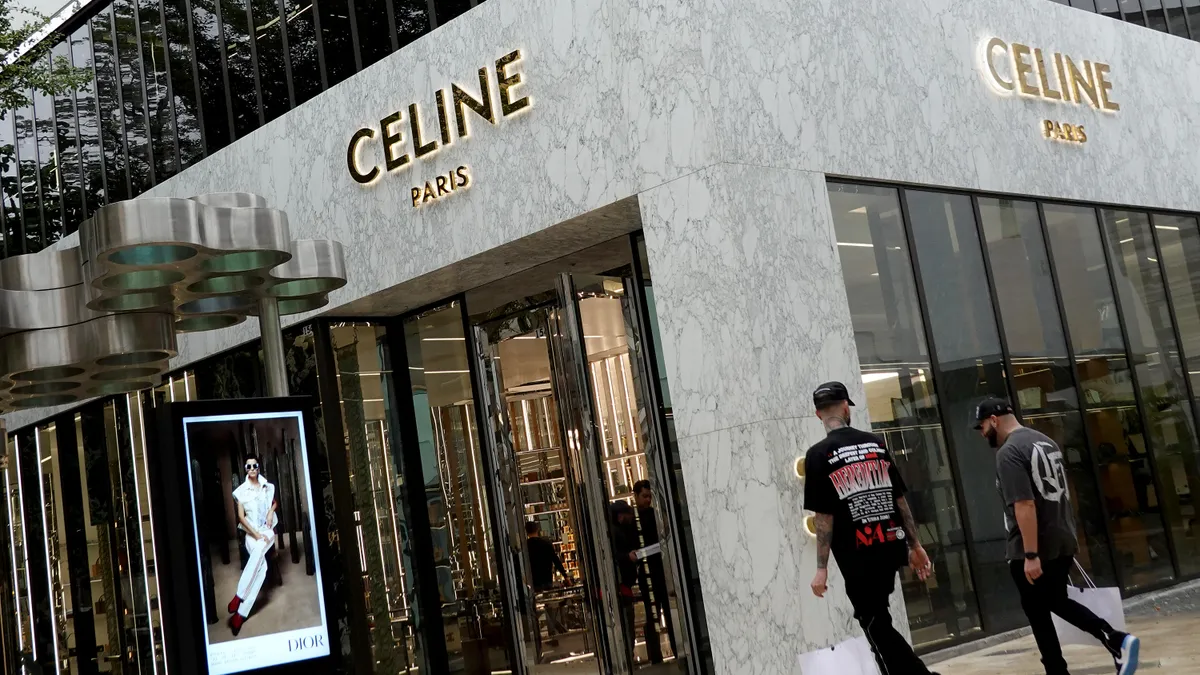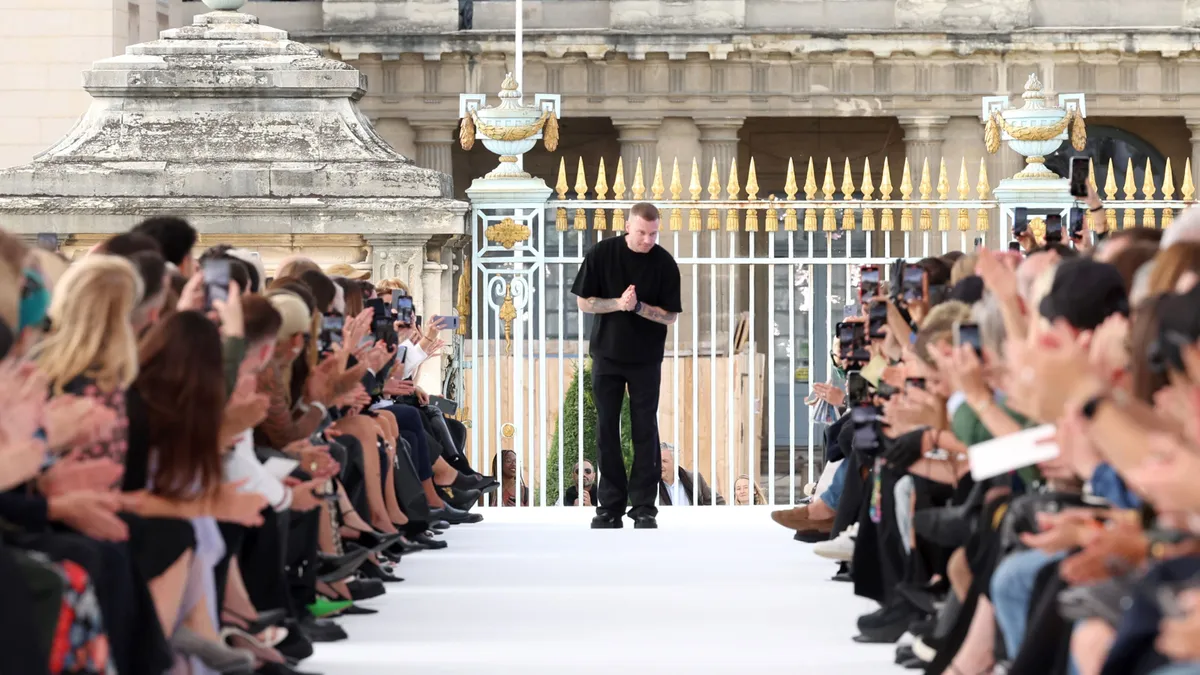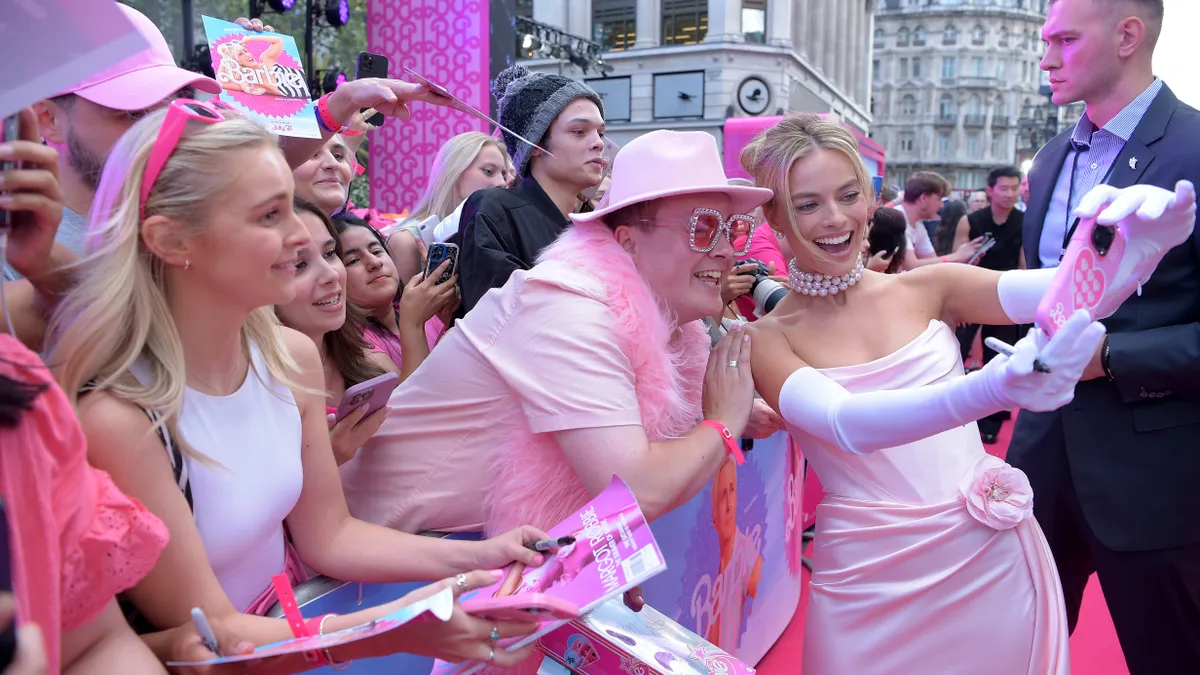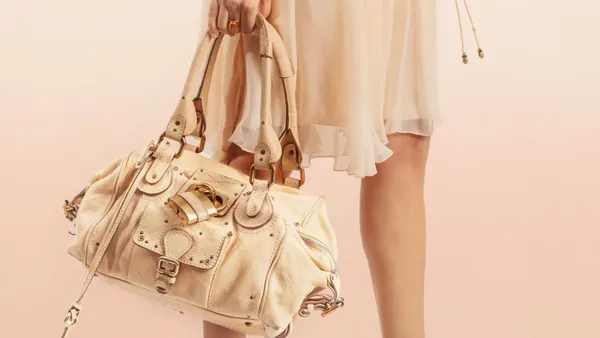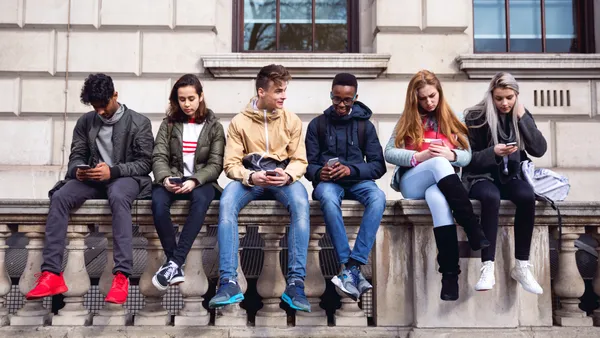Dive Brief:
- Aspirational luxury fashion customers, meaning consumers who spend a moderate amount on luxury, spend approximately $273.5 billion in market value on luxury goods each year, according to a report released Friday by McKinsey.
- That total amounts to 18% of the luxury fashion market in the seven countries studied, as well as 22% of the market for lower-end “affordable luxury brands.” By revenue, it amounts to half the total luxury revenue generated for those regions.
- The survey also found that apparel accounts for the bulk of luxury spending for this consumer group, which McKinsey calls ALCs, and 63% of respondents said “out of five pieces purchased in the past six months, at least one was a secondhand item.”
Dive Insight:
McKinsey identified five main ALC groups: status seekers, socialite spenders, quality seekers, timeless chic and mindful minimalists.
Status seekers are the largest group, and account for 39% of total ALC spending. This group is mostly under 35, makes below 100,000 euros per year, or approximately $106,000 at current exchange rates, and spends 3,500 euros per year on luxury fashion. They live predominantly in China, and follow “fashion trends, influencers, and online blogs.” Status seekers buy 69% of their purchases offline, and 22% of the luxury pieces they buy are pre-owned, per the report.
Aspirational luxury consumers account for half of luxury sales.
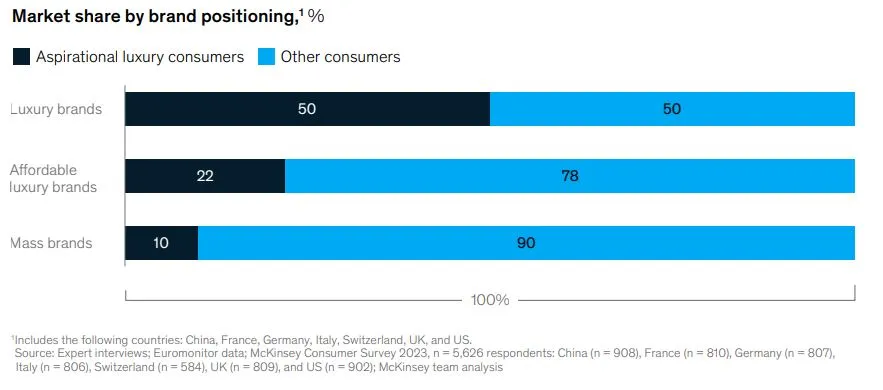
Socialite spenders have the highest income and spend the most — 5,400 euros per year — on luxury items, per the report. They account for 24% of the consumer pool, and like status seekers, they “are most likely to evolve from aspirational luxury consumers into true luxury consumers.”
Quality seekers account for 26% of the respondents, and are mostly in the U.S. and Europe. They buy most of their luxury goods in-store, spend about 3,000 euros per year on luxury fashion and are generally older than 40.
Timeless chic shoppers most resemble traditional luxury consumers, per the report, but account for only 6% of the data pool. While they never buy mass fashion, they spend less on luxury (4,500 euros per year) than true luxury shoppers.
Mindful minimalists are mostly men, according to McKinsey, and account for 4% of respondents. They eschew logos, spend about 3,000 euros a year on luxury fashion and buy primarily online.
The survey reached 5,626 people between 18 and 65 years old “who purchase their own apparel or fashion products, have purchased at least one item from a luxury fashion brand in the past six months” and spend between 3,000 euros and 10,000 euros, or between approximately $3,200 and $10,600 on fashion each year. It was conducted across China, France, Germany, Italy, Switzerland, the United Kingdom and the United States in the fourth quarter of 2023.
Additional insights from the report include information on geographical location, loyalty and influence.
- China has more ALCs under 35 than the other countries surveyed, and represented more than half of the total respondents. The U.S. is home to 25% of respondents, and 23% live in Europe.
- Between 75% and 80% of respondents said they buy “from a maximum of four brands,” although 73% said they “want to discover and try new brands,” and 94% said they experiment with new brands every six months.”
- In terms of influence, 42% of respondents “said they look to fashion magazines for inspiration” and 42% “said they get inspiration from celebrities.”
The report added that many of the luxury executives interviewed for this research mistakenly believed that ALCs were under 30, although McKinsey found almost 60% of them are 35 or older. In addition, 70% of ALCs said they would feel comfortable wearing lesser-known brands, which McKinsey said indicated “a diminished emphasis on conspicuous logos.”



